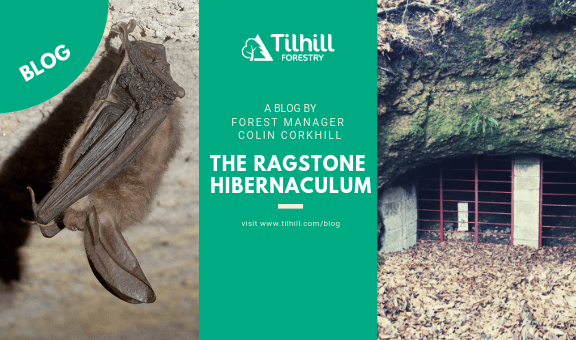This website uses cookies so that we can provide you with the best user experience possible. Cookie information is stored in your browser and performs functions such as recognising you when you return to our website and helping our team to understand which sections of the website you find most interesting and useful.
by Forest Manager, Colin Corkhill
The desire for Kentish ragstone as a hard, versatile building material has been utilised throughout England on an industrial scale since Roman times. The shallow seam of limestone, running from Kent to Surrey, around 25 miles to the south of the capital, occurs in shallow bands within the Greensand strip. Mined by hand under torch light, the stone was carried away by horse and cart. Today there are many well known buildings constructed of ragstone such as Westminster Abbey and the Tower of London, built during the thirteenth century.
One such mine at Hosey Common, Westerham, Kent dates back to the seventeenth century, where it has lain undisturbed and forgotten ever since the price of stone dropped only a few short decades after the mine’s opening. The network of tunnels burrow hundreds of metres just below the surface, criss-crossing the region. Many walkers regularly pass over the deep shafts and passageways daily, never knowing what is just a few metres beneath their feet.
Now, barred off to keep people out, the tunnels stay cold throughout the year providing a constant temperature that makes for the perfect hibernaculum: an undisturbed world perfect for bats to over-winter. The tunnels at Hosey Common are so ideal in fact that there are a greater number of bat species recorded here than in any other ragstone mine in the region. Many of which are internationally important and all protected by UK and European law.
Over the past hundred years the commons have been permitted to turn into woodland and the mines are now almost completely covered by a leafy canopy of Silver Birch, Beech, Oak, and Pine. More recently, the woodlands, which are scheduled as a Special Site of Scientific Interest (SSSI), are being managed under a Forestry Commission approved Woodland Management Plan, in conjunction with funding though Natural England’s Countryside Stewardship Woodland Improvement programme.
There is also interest from the local District Council and Kent Wildlife Trust, who are embarking on a commons restoration programme. Plus, the Kent Bat Group who carry out the important work to monitor and protect the hibernaculum. Not forgetting the site is a designated common, permitting full public access throughout this highly significant and sensitive area. So, no wonder, when the subject of timber harvesting is added to the mix, there is the potential for a number of very lengthy, well-intentioned conversations to be had to ensure all parties do not come into conflict with one another and only the most positive actions are taken that suit all the many objectives.
As the Forest Manager for the site I knew this was never going to be straight forward. So, I entered the process with an open mind and a willingness to learn, keen for everyone to have their say. After only twelve short months of consultation we are now at the point of commencing the timber harvesting. All parties have taken a key role sharing information and guidance and are now eager to see the results. Let’s just hope the bats like it!




